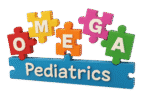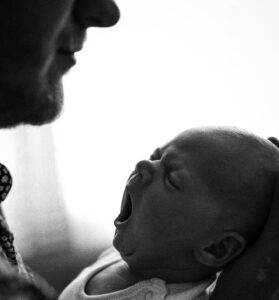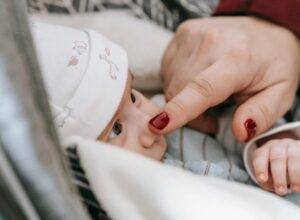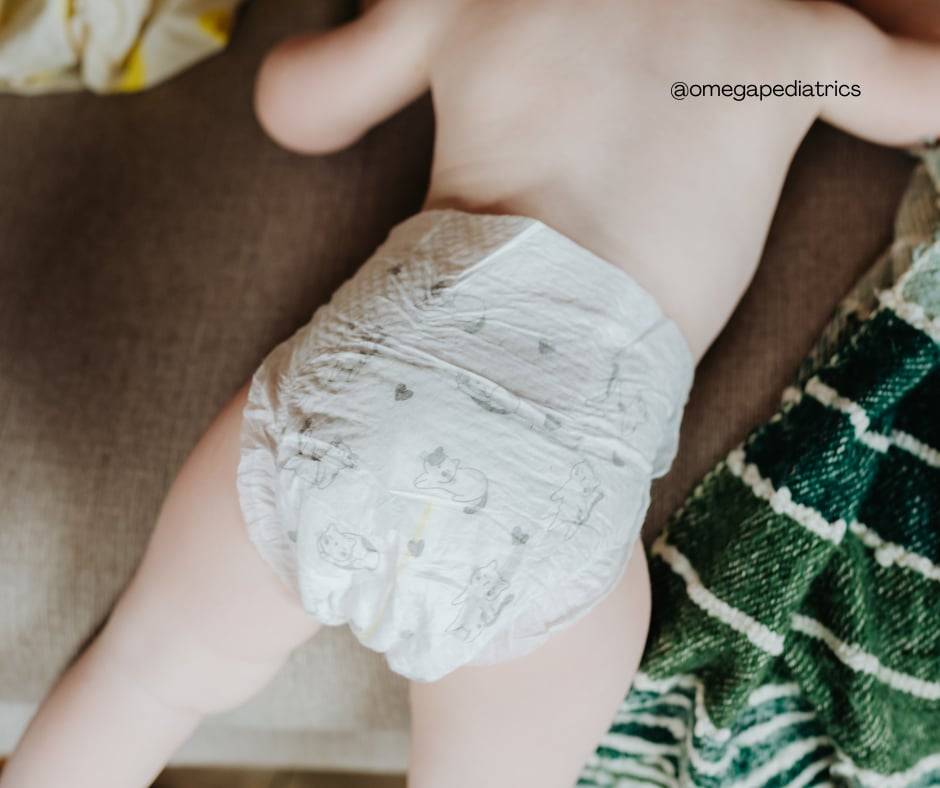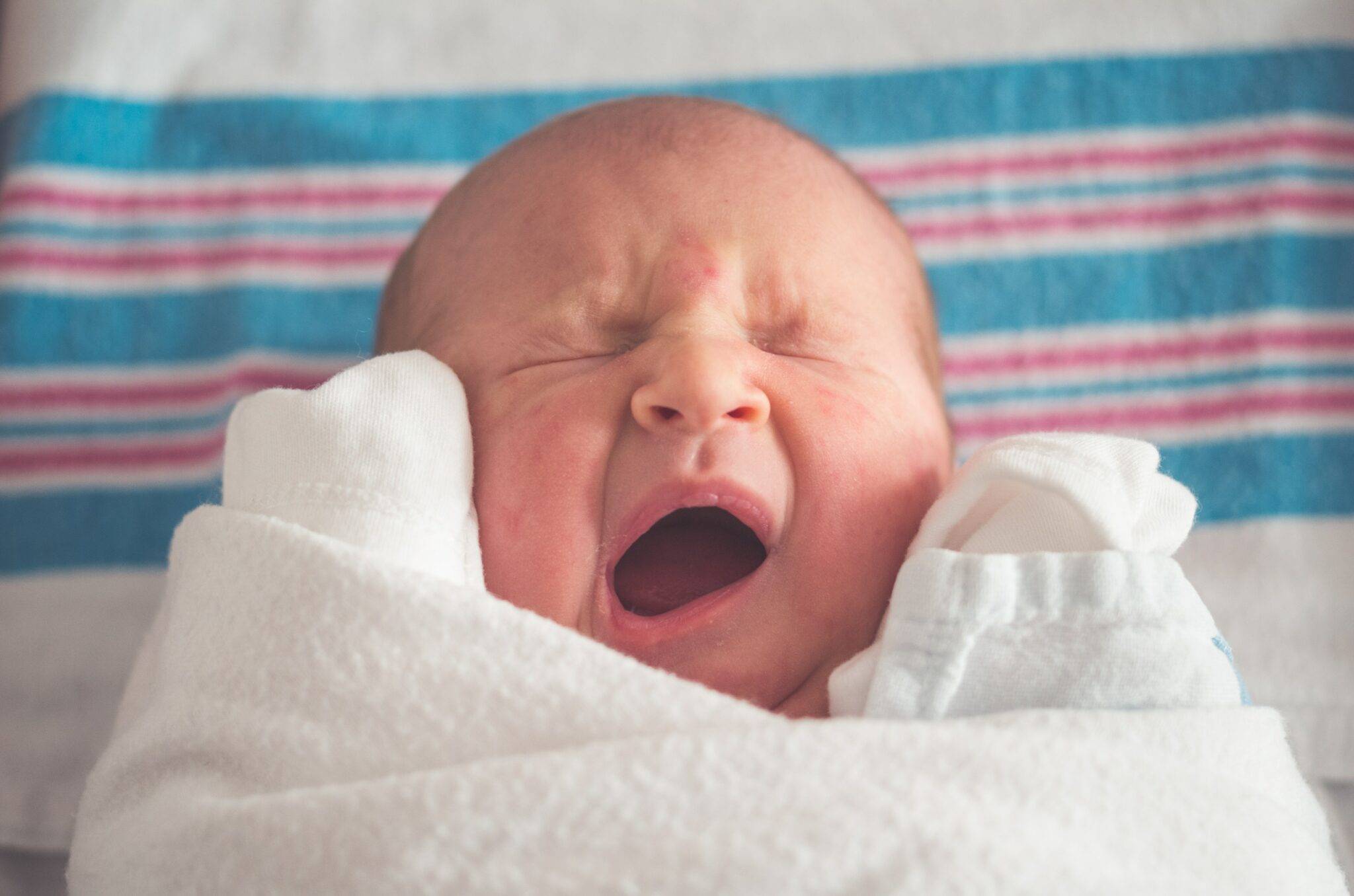The arrival of a newborn is a special time, filled with joy, curiosity, and plenty of questions. One of the more fascinating aspects of a baby’s early development is their sense of sight, particularly when they begin to perceive colors. Many parents wonder, “When can my newborn baby see color?”
Understanding the timeline and progression of your baby’s vision helps you to engage with them in ways that stimulate their development, providing the right stimulation and interaction as their senses awaken. This comprehensive guide will dive into the stages of visual development, discuss when babies start seeing colors, and offer tips on how parents support this critical aspect of growth. By the end, you’ll understand your baby’s visual journey and how you can help them explore the world around them.
Newborn Baby See Color: How Newborn’s Vision Develops
The First Days: A World in Shades of Gray
At birth, the baby’s sense of sight is one of the least developed of all their senses. The eyes are still adjusting to life outside the womb, and their vision isn’t yet sharp. Newborns only see objects 8 to 12 inches away—the perfect distance for focusing on a parent’s face during feeding.
You might wonder if your newborn baby see color immediately at birth. However, the baby’s world is largely black, white, and gray. The reason newborns can’t see color is the development of the cones in their retinas. Cones are the cells responsible for detecting color; these are still immature at birth. Although your baby can make out general shapes and large, high-contrast patterns, such as your face, they won’t be able to differentiate colors immediately.
Light Sensitivity and Vision
Newborns have sensitivity to light. You notice your baby squinting or turning away from bright lights, which is normal. Their pupils, which control how much light enters the eye, are smaller than an adult’s and take time to adapt to different brightness. Keep their environment softly lit during the first few weeks to prevent overstimulation.
When Does a Newborn Baby See Color?
The First Month: Red Begins to Appear
While a baby’s initial vision is primarily black and white, this changes after the first few weeks. By the end of the first month, babies develop some ability to perceive color, particularly red. Red is one of the first colors babies can see because the cones that detect longer wavelengths of light (like red) develop more quickly.
While their color perception is still limited, babies show signs of recognizing different colors. You notice them gazing at bright red objects or being more attentive to toys with bold patterns in contrasting colors. Their vision is still blurry, and they’re beginning to explore the colorful world around them.
2 Months: The Emergence of More Colors
A newborn baby see color, thier vision improving significantly. This is an exciting time, as babies see more than just red. They detect other colors, especially green and yellow. However, their color vision isn’t yet fully developed. Although they’re beginning to appreciate a range of hues, the world still appears muted compared to adults. Introduce your baby to more colorful objects during playtime. Toys, mobiles, and picture books with bright colors and simple shapes help them practice developing sight.
3 Months: Sharper Color Perception
Your baby makes significant strides in their visual abilities. Not only do they see more colors, but their vision is clearer. They perceive colors like blue, typically one of the last to be recognized due to the slower development of the cones responsible for detecting shorter wavelengths of light. Three-month-old babies are becoming more interested in the world around them and follow moving objects with their eyes. They’re more engaged with faces and brightly colored toys, stimulating their growing visual skills.
4 to 6 Months: Full-Color Vision Arrives
Your baby’s vision undergoes a remarkable transformation. Like adults, babies see the full spectrum of colors. They distinguish different colors and are more adept at noticing subtle differences in shades and tones. This is a critical period for visual development as babies explore their surroundings with greater curiosity and interest. Depth perception is improving, allowing them to judge distances. Continue providing a variety of colorful stimuli to help your baby hone their visual skills.
Newborn Baby See Color: Supporting Color Vision Development
1. Use High-Contrast and Colorful Toys
Babies are particularly drawn to high-contrast objects such as black-and-white patterns or toys with bold contrasts. These visuals make it easy for them to develop their vision. As their color vision improves, introduce toys with bright colors like red, green, and yellow to encourage their interest.
Mobiles with colorful objects, stacking toys, and picture books with simple, bright illustrations are great choices for this age. Babies love exploring new things with their eyes, and giving them a range of visual stimuli strengthens their ability to perceive color.
2. Design a Colorful Environment
Your baby’s surroundings impact their visual development. While newborns are initially focused on high-contrast patterns, as they get older, they appreciate colorful surroundings. Decorate their nursery or play area with primary colors and bold patterns to stimulate their visual curiosity.
Wall art featuring vibrant animals, colorful mobiles, and bright bedding are excellent choices. As your baby grows, they engage with the colors in the environment, and these visual elements aid their learning and exploration.
3. Encourage Color Exploration Through Play
Playtime is one of the most effective ways to support your baby’s visual and cognitive development. Start engaging your baby with colorful toys and objects. Hold colorful toys or books and move them slowly from side to side, encouraging your baby to follow the movement with their eyes.
Babies love to look at new things, and showing them colorful objects strengthens their visual abilities. Take them outdoors for walks and point out colorful flowers, trees, or cars. Outdoor environments are full of natural color variations, making them ideal for helping your baby expand their visual horizons.
Signs of Potential Vision Problems in Babies
While most babies develop their color vision and overall sight on a typical timeline, some signs indicate a problem. Early detection of vision issues is crucial for ensuring the best possible outcomes. Here are a few signs to watch for:
- Lack of eye contact: 2-3 months old, babies have eye contact. If your baby avoids eye contact or doesn’t seem to focus on faces, it could be a sign of a vision issue.
- Difficulty tracking objects: Babies usually start following moving objects with their eyes by 3-4 months old. If your baby doesn’t seem interested in tracking moving objects, this may warrant further evaluation.
- Crossed-eyed: Occasional eye crossing is normal for newborns; if your baby’s eyes remain crossed beyond 4 months old, it might indicate strabismus that needs to be addressed by a healthcare provider.

- No reaction to bright colors: By 3-4 months old, babies should be showing some interest in brightly colored objects. If your baby doesn’t notice or react to colors, it could signal a delay in vision development.
- Frequent squinting or eye rubbing: While babies often rub their eyes when tired, constant eye rubbing or squinting could signal they’re having difficulty seeing clearly.
If you have concerns about your baby’s vision, don’t hesitate to discuss them with your pediatrician. Vision problems can be addressed with early interventions, which significantly impact your child’s overall development.
The Importance of Regular Vision Checkups
Routine vision screenings are an essential part of your baby’s health care. Your pediatrician checks your baby’s vision during well-child visits to ensure normal sight development. These early screenings are critical for detecting potential issues before they become more serious.
The American Academy of Pediatrics (AAP) recommends babies receive their first comprehensive eye exam at around six months old. This exam identifies conditions that could interfere with your baby’s visual development, such as nearsightedness, farsightedness, or other eye conditions.
Supporting Your Baby’s Overall Health
Aside from monitoring your baby’s vision, regular pediatric visits are essential for tracking their overall health and development.
If you’re curious about what to expect during these visits or the importance of keeping with routine appointments, check out 5 Essential Reasons Why Regular Pediatrician Visits are Vital for Your Newborn’s Health. This article outlines why consistent checkups are vital for your baby to grow healthy and happy. For further insights into baby’s vision development, we have this article for you: 10 Fascinating Facts About How Newborn Babies See the World
Celebrate Your Baby’s Visual Milestones
Watching your baby discover the world is a wonderful experience, and witnessing their ability to see color unfold is particularly exciting. From their early days of seeing in shades of black and white to eventually perceiving the full spectrum of colors, your baby’s vision is rapidly developing.
As a parent, you can support this process by providing the right environment, toys, and experiences to help your child explore their colorful world. By understanding the stages of visual development and knowing what to expect, you engage with your baby in ways that encourage their growth.
Monitor their progress and stay alert to potential signs of vision issues. With the right support, your baby will enjoy the beautiful colors of life. If you have concerns about your baby’s vision or development, don’t hesitate to discuss them with your pediatrician for guidance. Early intervention is key to ensuring your child’s vision develops properly, allowing them to thrive in every stage of life.
